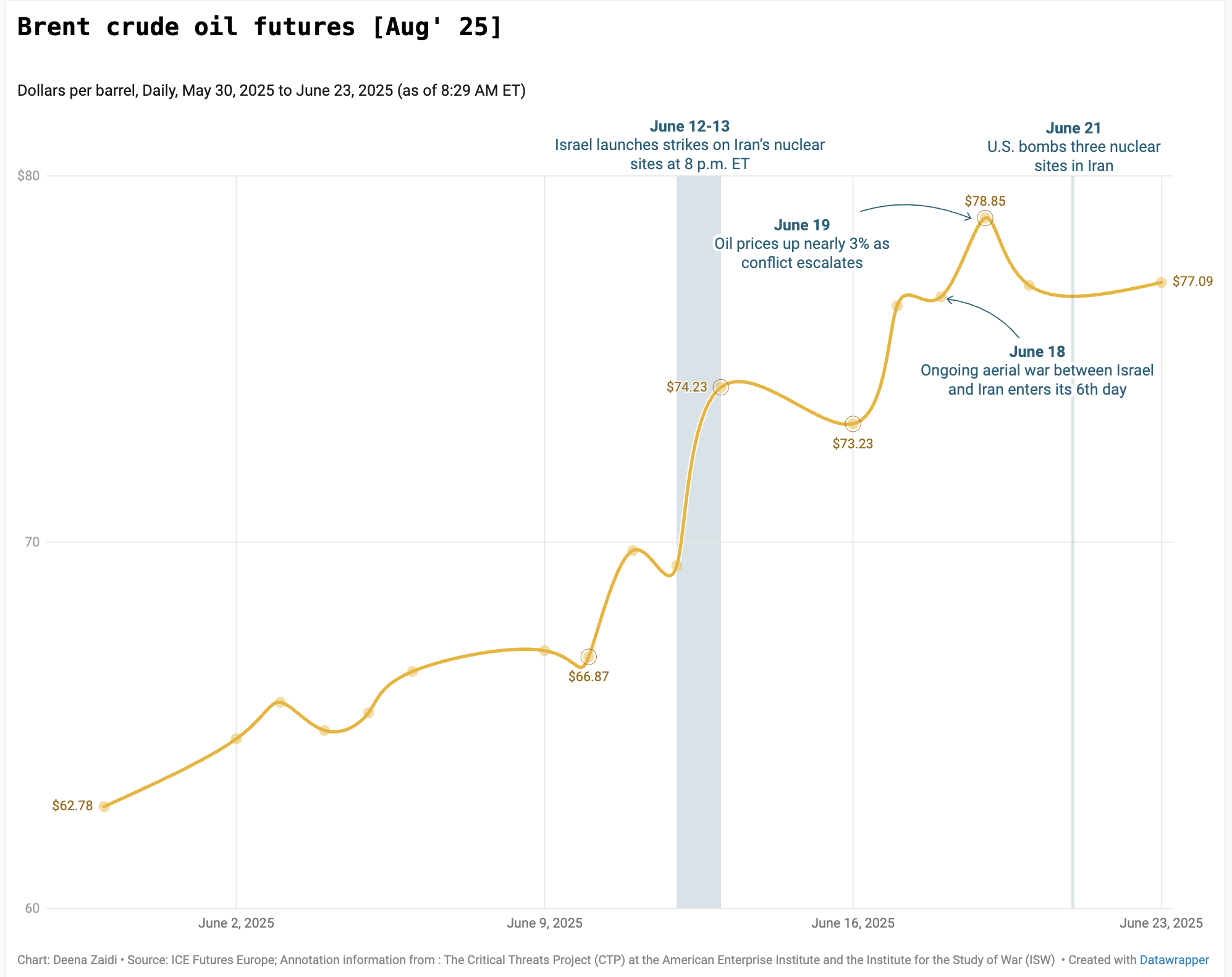The narrow passage between Iran and Oman, known as the Strait of Hormuz- is a linchpin for global crude flows since 20 million barrels daily transit this route—this is roughly 20% of global oil shipments.
The strait handles world’s largest crude oil tankers, and it is one of the world’s most important oil chokepoints. According to the data retrieved from IMF’s UN PortWatch, tankers make up roughly 60% of annual vessels, following containers and dry bulk carriers.
The primary goods traded through the strait are oil, minerals, chemicals, and vegetable products.
In the past, Iran has warned to shut down the critical Strait of Hormuz to traffic in retaliation for Western pressure. The decision to shut off the strait lies with Iran’s Supreme National Security Council.
After U.S. bombing raids, a closure of the Strait could mean trade disruptions, overcrowding of alternate routes, and impacting global oil prices. Even though most part of the Strait lies in Oman, countries such as Greece have advised merchant ships to avoid the Strait of Hormuz.
The U.K. Maritime Trade Operations centre has urged ships to steer clear of the Gulf of Aden, which could potentially add up to two weeks in transit time for some routes. Caution is also being taken to transit the Arabian Gulf, Gulf of Oman and Straits of Hormuz and vessels have been advised to report incidents or suspicious activity.

Price Volatility
The Brent crude oil (a global benchmark) prices (Aug ’25) already saw fluctuations after June 12 after Israel launched strikes on Iran. The price increased from $69 per barrel (b) on June 12 to $74/b on June 13.
Goldman Sachs estimates Brent crude could temporarily spike to $110 per barrel if oil shipments through the key waterway were cut in half for a month and stayed 10% below normal levels for the next 11 months.
Who moves the most oil?
By origin:In 2024, Saudi Arabia moved the most oil through Strait of Hormuz, accounting for 38% of crude and condensate exports—about 5.5 million barrels per day.
If shut, oil markets could face the prospect of sustained disruptions. While OPEC+ producers retain spare capacity, most of it resides in Persian Gulf states where the risk of military spillover is highest.
In 2024 and early 2025, over a quarter of global seaborne oil trade and about one-fifth of global oil and petroleum product consumption passed through the Strait of Hormuz.
Additionally, about 20% of global LNG trade—primarily from Qatar—also passed through the strait in 2024 and early 2025.
By destination: Most of the crude oil (84%) and liquefied natural gas (83%) moved through the strait goes to Asian countries, namely China, according to the U.S. Energy Information Administration (EIA).
In 2024, China, India, Japan, and South Korea received 69% of all the crude oil flowing through the Strait of Hormuz and could make these most vulnerable to any supply disruption through a shutdown. At the same time, the U.S. crude imports from the Persian Gulf were at a 40-year low , driven by rising domestic output and Canadian imports.
